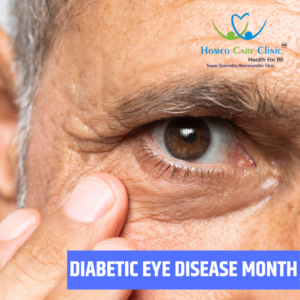Diabetic Eye Disease Month: A Comprehensive Guide
Introduction
Diabetic Eye Disease Month is a dedicated time to raise awareness about the ocular complications that individuals with diabetes can face. This annual observance, celebrated in November, serves to educate the public about the risks, causes, symptoms, and preventive measures related to diabetic eye diseases.
Epidemiology
Diabetic eye diseases, including diabetic retinopathy, diabetic macular edema, and cataracts, are serious complications affecting people with diabetes. According to the World Health Organization, over 422 million people worldwide have diabetes, with the number expected to rise significantly in the coming years. The risk of developing diabetic eye diseases increases with the duration and severity of diabetes.
Causes
The primary cause of diabetic eye diseases is chronic high blood sugar levels. Prolonged exposure to elevated glucose levels can damage the blood vessels in the retina, leading to diabetic retinopathy. Additionally, diabetes can increase the risk of cataracts and diabetic macular edema.
Symptoms
Common symptoms of diabetic eye diseases include blurred or distorted vision, floaters, sudden vision loss, and difficulty seeing at night. These symptoms can progress if left untreated, potentially leading to severe vision impairment or blindness.
Preventive Measures
Preventing diabetic eye diseases is a vital aspect of diabetes management. Some key preventive measures include:
1. Regular eye exams: Annual comprehensive eye exams are crucial for early detection and timely treatment of diabetic eye diseases.
2. Blood sugar control: Maintaining target blood sugar levels is essential to reduce the risk of ocular complications.
3. Blood pressure and cholesterol management: High blood pressure and elevated cholesterol levels can exacerbate diabetic eye diseases. Controlling these factors is essential.
4. Healthy lifestyle: A balanced diet, regular exercise, and not smoking can help lower the risk of developing diabetic eye diseases.
Benefits of Homeopathy
Homeopathy offers an alternative approach to managing diabetic eye diseases. Homeopathic medicines are tailored to individual symptoms and constitution, aiming to address the root cause of the condition.
Five Homeopathic Medicines for Diabetic Eye Diseases
1. Ruta Graveolens: This remedy is often used for eye strain, blurred vision, and retinal hemorrhages associated with diabetic retinopathy.
2. Phosphorus: Phosphorus may help individuals with diabetic eye diseases, especially when there are symptoms of retinal damage, such as vision loss, and when the eyes are prone to bleeding.
3. Natrum Muriaticum: Natrum Muriaticum is considered for individuals who experience dryness and grittiness in the eyes, which can be common in diabetic eye conditions.
4. Apis Mellifica: This remedy can be useful for managing eye swelling and inflammation associated with diabetic macular edema.
5. Argentum Nitricum: Argentum Nitricum is indicated when there is a tendency towards developing cataracts due to diabetes. It may help in preventing their progression.
In conclusion, Homeo Care Clinic offers a holistic approach to treating Diabetic eye disease. The remedies mentioned above can treat the underlying causes of the condition and offer relief from the discomfort. However, it is important to consult a qualified homeopathic practitioner for the correct dosage and duration of treatment. Homeo Care Clinic provides comprehensive care for various ailments, including Diabetic eye disease, and offers customized treatment plans based on individual requirements.
To schedule an appointment or learn more about our services, please visit our website or give us a call. Our friendly staff will be happy to assist you.
Follow us on Facebook, Twitter, and Instagram for valuable insights into the world of homeopathy and holistic health.
Facebook – https://www.facebook.com/homeocareclinicpune
Instagram – https://www.instagram.com/homeocareclinic_in






